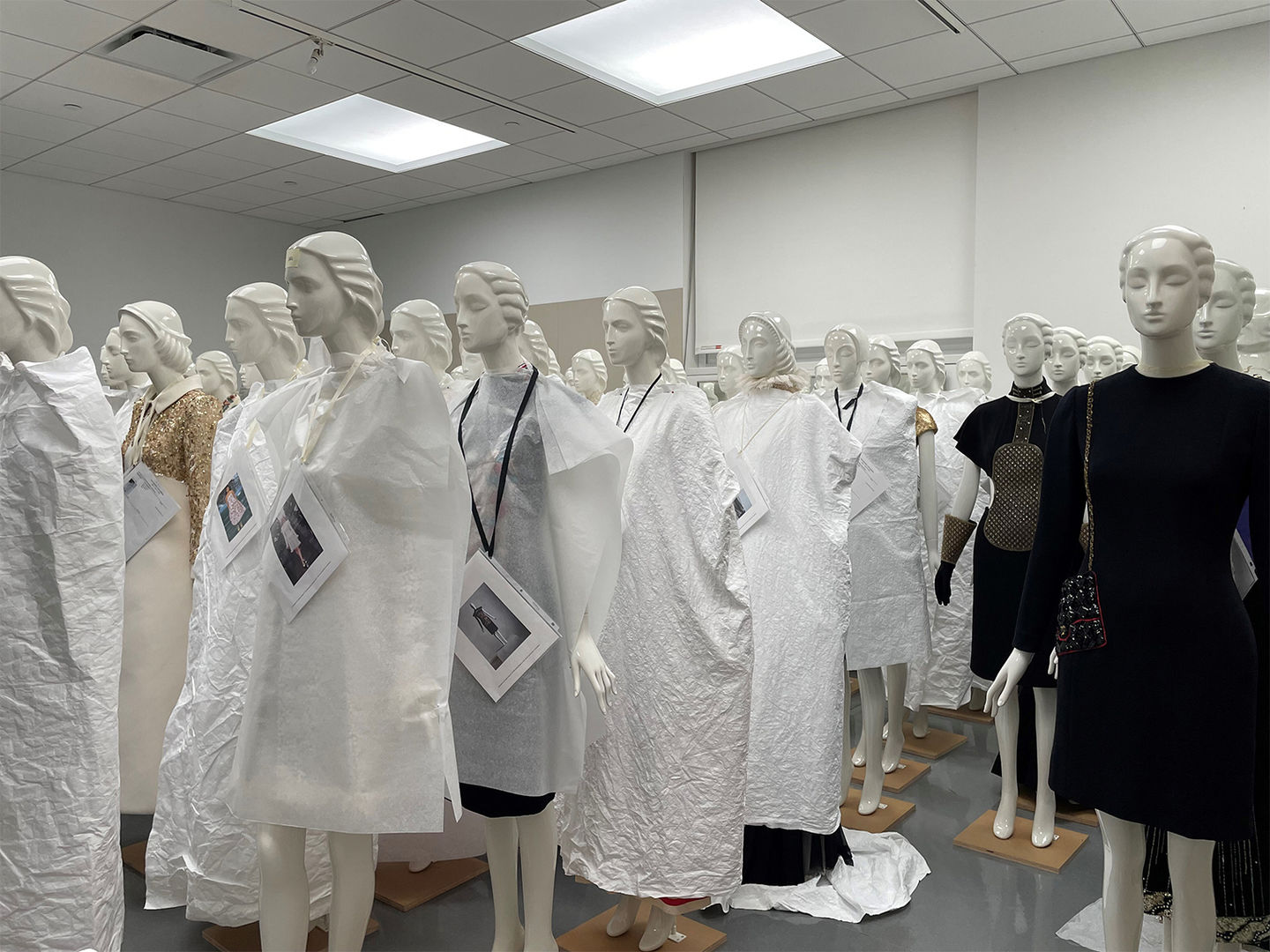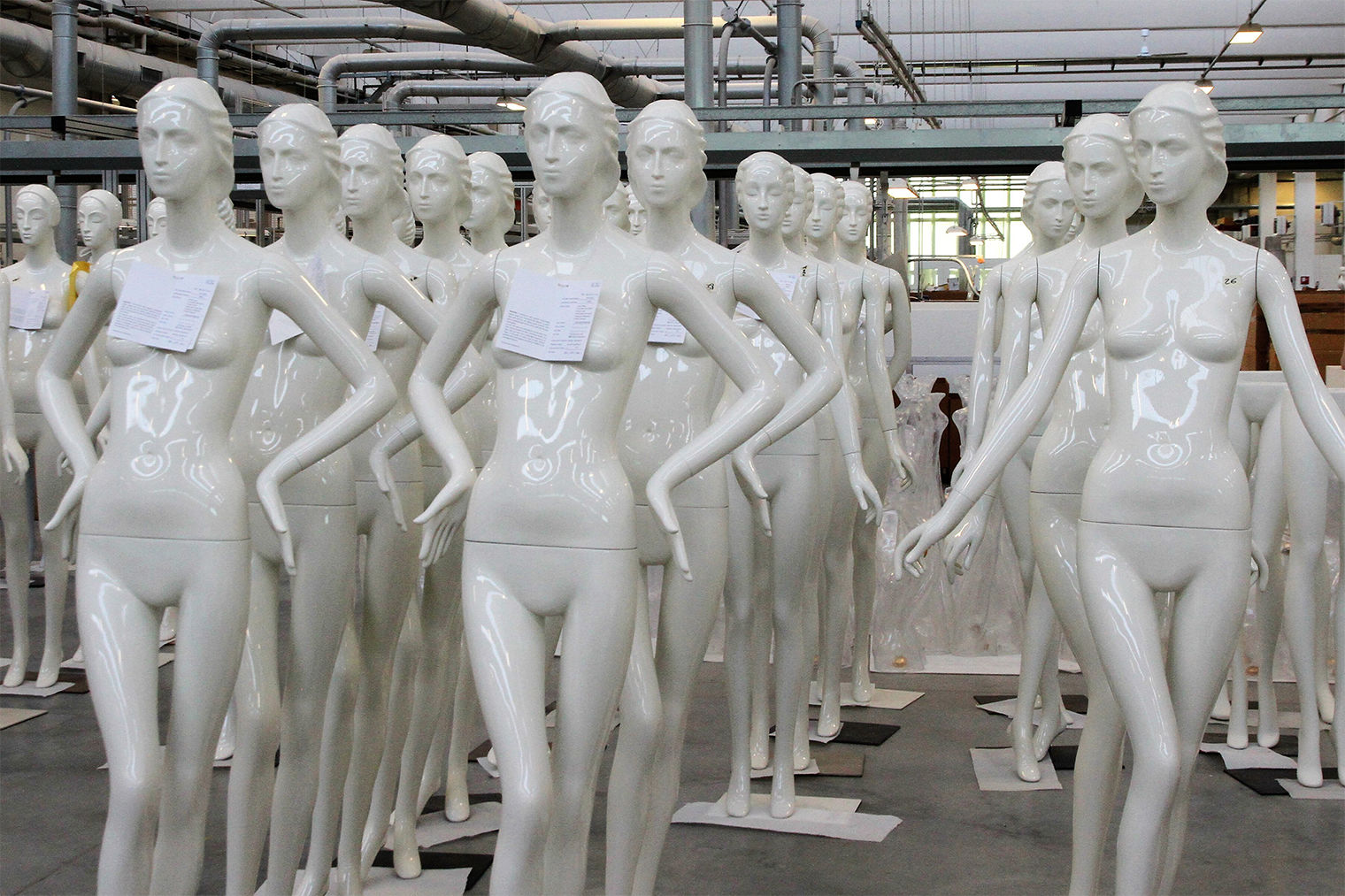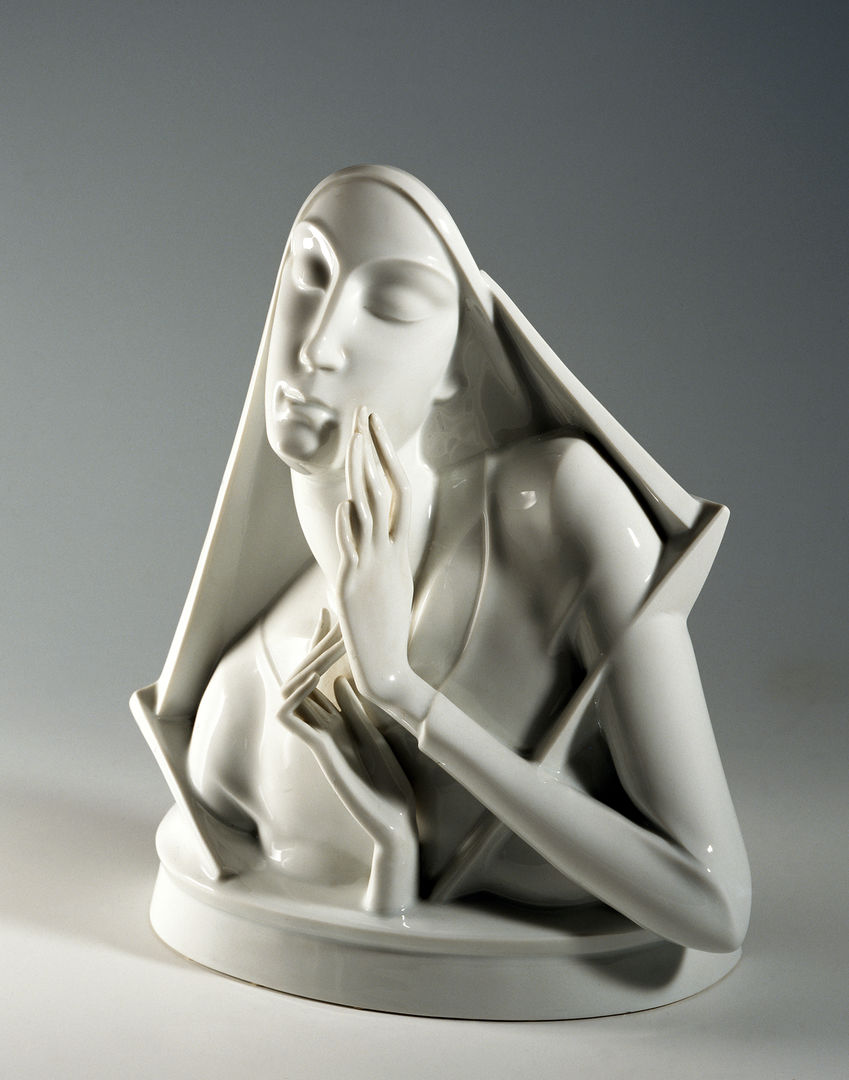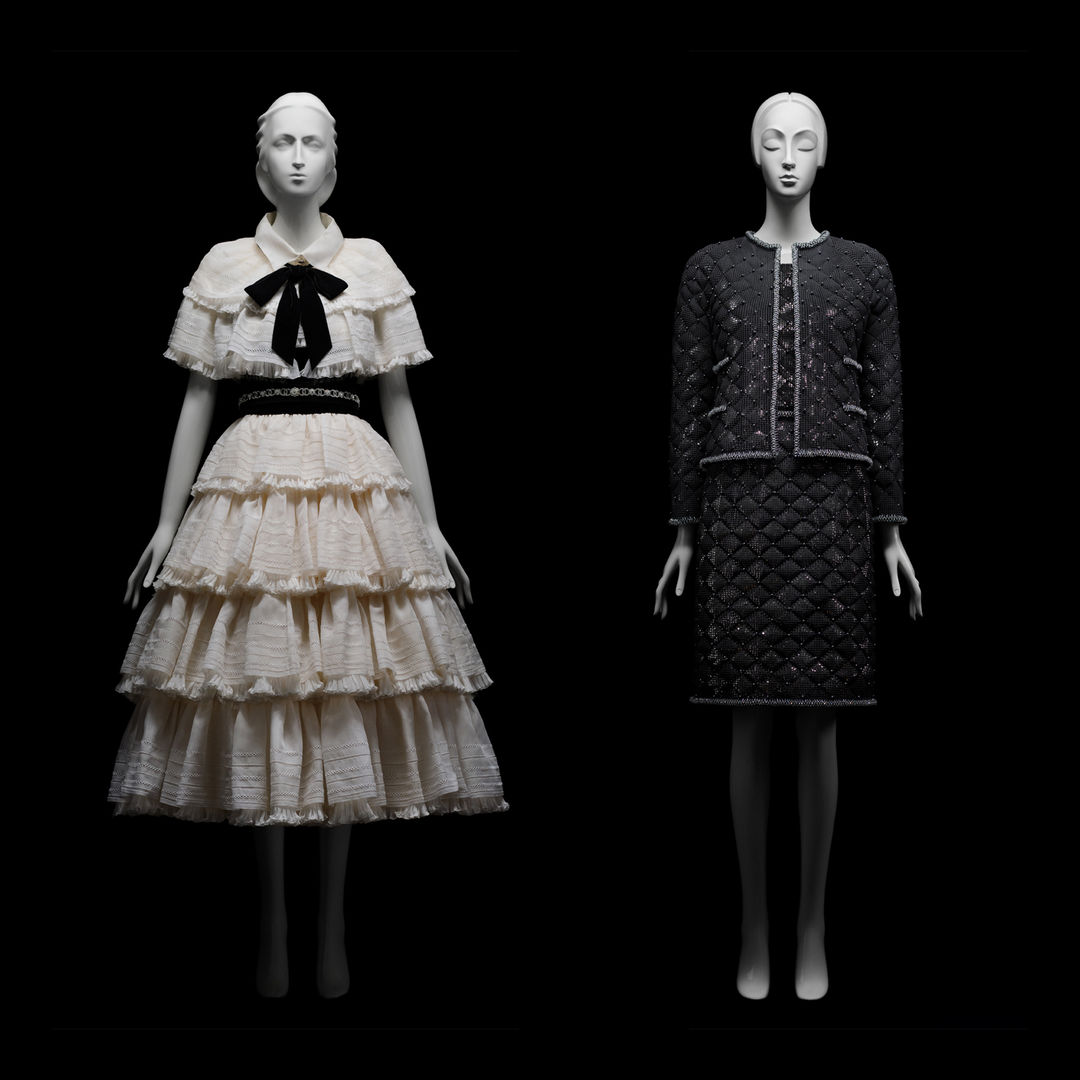Although they are integral to displaying costumes in museums, fashion mannequins are foremost designed and made for retail. Most fashion in exhibitions are dressed on mannequins you see in department stores and shops. Few specialty mannequin manufacturers cater to a museum’s need for archival-quality materials and period-specific forms.
At The Met’s Costume Institute, mannequins are transformed by the context of their display and tasked with supporting a curatorial vision through elements like styling, scenography, and interaction with other objects. These mannequins often undergo physical alterations, from slight modifications to complete redesigns. Our exhibition, Karl Lagerfeld: A Line of Beauty, provided another opportunity for us to work with our collaborator, Bonaveri, and create a mannequin suited to the particular needs of the show.

Photography of mannequins in Installation of The Costume Institute. © The Metropolitan Museum of Art
Typically, mannequins are full-body representations of the human form, with a head, arms, and legs. Some are designed to look more realistic, with etched irises and fingernails, while others are abstracted with softened facial features or even a simplified egghead shape. At The Met, the Schläppi mannequin, refreshed and currently manufactured by Bonaveri in Italy, has been a mainstay in Costume Institute exhibitions for more than fifty years—a feat achieved by her timelessness and flexibility. Using these unique mannequins, we can dress most costumes from the 1920s to the present on a single form while still achieving a high level of historical verisimilitude and fit.The wasp waist and defined bust of the 1950s, however, have always presented challenges for our department. To resolve these issues, we designed the “Corset Torso,” created by Bonaveri, which was first used for the 2019 exhibition Camp: Notes on Fashion. The customized torso functions with existing arms and legs and was first developed to accommodate ensembles from fashion houses such as Christian Dior and Alexander McQueen that did not fit on the standard Schläppi. The size of a fashion model has evolved beyond that of a typical mannequin originally designed in the 1960s. Theatrical runway spectacles have also encouraged increasingly extreme fashions involving corsetry, unusual materials, and unprecedented shapes, all of which can contribute to costumes not easily fitting on a mannequin.

Image of mannequins for the Lagerfeld exhibition taken from Bonaveri’s factory. Courtesy Bonaveri
We determined that the Schläppi body would work well with Lagerfeld’s designs for Chanel, Chloé, Fendi, and his namesake brand. Architect Tadao Ando’s modern and geometric exhibition design called for a similarly designed mannequin to tease out the serpentine and straight lines in the curation. We used mannequins with knee-bend and straight-leg poses to reflect the dichotomy of the lines. For the head, curator Andrew Bolton wanted something special to relate to Lagerfeld’s taste and aesthetic as an art collector. Lagerfeld collected the porcelain figurines of Gerhard Schliepstein (1886–1963), a German sculptor of the Art Deco period, which became the inspiration for our mannequin heads.

Gerhard Schliepstein, (German, 1886–1963). The Transfiguration, ca 1928. Porcelain. Private Collection, Alfredo Dagli Orti / Art Resource, NY
With attention to detail and scale appropriate for a fashion mannequin, Bonaveri sculpted four heads that seamlessly transitioned into the existing Schläppi body, drawing on works like Diana and Deer (1924) and Woman with Two Candlesticks (1925). They were produced with a white finish that emulates the gloss of porcelain. Since gesture is critical in a mannequin, new hands with elongated fingers were also sculpted to match the stylized Art Deco faces. The elegant results support a unique presentation of the designs of Karl Lagerfeld as a master of his craft.
Watch a video showing the production process of the mannequins. Courtesy Bonaveri




















